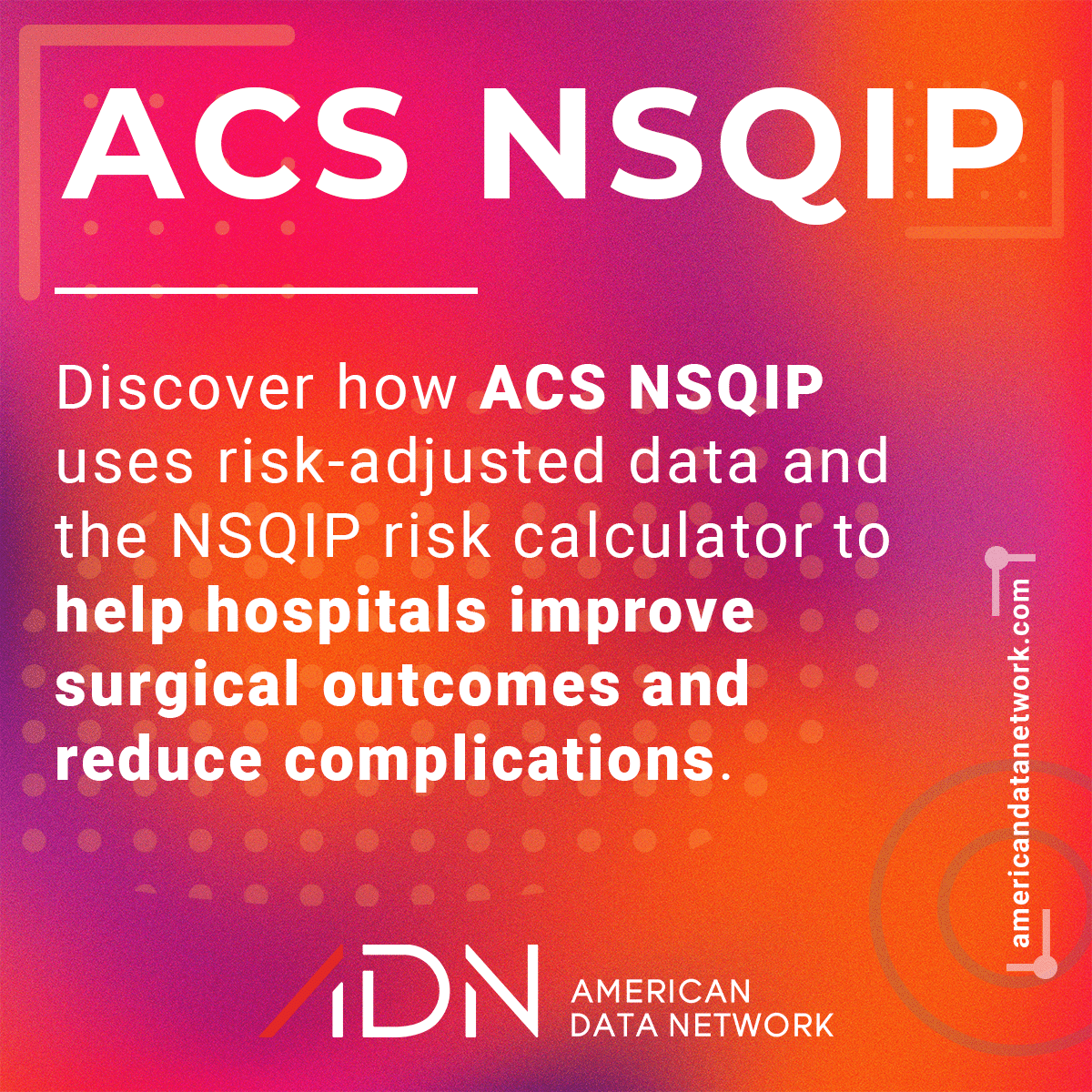How ACS NSQIP Improves Surgical Quality and Reduces Complications
The ACS NSQIP program empowers hospitals with validated, risk-adjusted data to elevate surgical outcomes. Learn how the NSQIP database, risk calculator, and expert medical chart abstraction work together to reduce complications and drive sustainable quality improvements.
⏰ 5 min read
Table of Contents
Collecting timely and accurate data for the ACS NSQIP Registry is essential to improving surgical outcomes—but it’s also one of the most resource-intensive tasks facing quality and surgical teams. Our ACS NSQIP data abstraction services reduce that burden by delivering precise, risk-adjusted data that meets program specifications, supports clinical decision-making, and strengthens your hospital’s journey toward high reliability.

What is NSQIP?
The American College of Surgeons National Surgical Quality Improvement Program (ACS NSQIP) is a nationally validated, risk-adjusted, outcomes-based program that provides hospitals with tools to measure and improve surgical care. Unlike other quality initiatives that rely on administrative claims data, ACS NSQIP gathers clinical, chart-derived data from surgical patients, allowing for precise benchmarking and actionable insights.
Hospitals participating in ACS NSQIP can compare their 30-day surgical outcomes with peer institutions, enabling them to identify gaps in care, implement targeted interventions, and track progress over time.
Origins of the ACS NSQIP Program
ACS NSQIP traces its roots to the late 1980s, when the U.S. Department of Veterans Affairs launched a quality initiative to address high surgical complication and mortality rates across 133 VA hospitals. Early efforts struggled due to a lack of a risk-adjusted national benchmark.
This led to the National VA Surgical Risk Study, conducted from 1991 to 1993, which established the parameters for risk adjustment. As a result, the VA created the VA-NSQIP in 1994, and within years, reported a 27% reduction in mortality and a 45% drop in morbidity.
The American College of Surgeons recognized the value of this model and adopted it for broader use. By 2004, ACS NSQIP was launched nationally, expanding beyond the VA system. Today, more than 350 hospitals in the U.S. and Middle East participate in the program.
Why ACS NSQIP Is Different from Other Quality Programs
NSQIP can move the quality needle forward by measuring and subsequently improving outcomes. Hospital leaders at participating hospitals, however, must first understand the program’s unique potential – as it is one of many quality programs and these leaders need to be motivated to pick it.
ACS NSQIP, however, is different from other quality programs, as it leverages an optimal set of data. Most other quality improvement efforts are based on claims data from billing files. Among many shortcomings, claims data is difficult to accurately adjust for patient risk factors or to determine if a patient experienced a related complication after leaving the hospital (when half of all such complications typically occur), according to an educational piece published by ACS.
ACS NSQIP provides:
- Peer-reviewed, validated methodologies
- Risk-adjusted outcomes reporting
- Data derived from direct chart abstraction
- Consistent definitions and rigorous training for data abstractors
These features make ACS NSQIP one of the most trusted programs for surgical quality benchmarking.
Leveraging the NSQIP Risk Calculator
The NSQIP Risk Calculator is a powerful tool that helps surgeons and patients understand potential post-operative risks. It estimates a patient’s likelihood of experiencing any of 18 complications within 30 days of surgery.
Key Features of the Risk Calculator
- Evaluates 20+ preoperative patient characteristics
- Predicts risks for specific complications (e.g., pneumonia, cardiac events, SSI)
- Estimates length of stay
- Provides easy-to-read patient summaries
By using this tool, surgical teams can tailor pre- and post-operative care to minimize risk, and patients can make more informed decisions.
Addressing ACS NSQIP Challenges
Deciding to participate in NSQIP is step one. Participating hospitals need to overcome various challenges to get the most out of participation. To start, hospitals must:
- Find a way to efficiently and cost effectively collect the requisite data in accordance with ACS NSQIP guidelines (NSQIP Data Abstraction outsourcing is an easy, cost-effective solution to this)
- Empower surgical clinical nurse reviewers to collect 135 clinical variables including preoperative risk factors, intraoperative variables, and 30-day postoperative mortality and morbidity outcomes for patients undergoing major surgical procedures
- Prepare a twice-a-year report that on mortality and complications in accordance with ASC NSCIP guidelines
Diving into ACS NSQIP Data Details
Many types of data need to be collected for NSQIP. The variables are collected from the following categories:
- demographics
- surgical profile
- preoperative
- intraoperative
- postoperative data
Each hospital submits an average of 1600 major operations per year into the NSQIP database. According to ACS, nine categories of complications are reported:
- overall mortality
- overall complications
- cardiac complications
- postoperative pneumonia
- intubations required within 48 hours post-surgery (>48-hour intubations)
- unplanned intubations
- pulmonary embolism and venous thrombosis
- renal dysfunction
- surgical-site infections including superficial, fascia, and deep infections
The Role of Medical Chart Abstraction
Medical Chart Abstraction is central to accurate NSQIP participation. This process involves extracting clinical data from patient records to meet compliance, quality, or research goals.
Benefits of Expert Chart Abstraction
- Ensures adherence to ACS NSQIP guidelines
- Reduces errors that may trigger penalties or reputational harm
- Highlights care gaps and improvement opportunities
- Supports data-driven decision-making
Hospitals that outsource chart abstraction often gain efficiency, consistency, and expert-level accuracy, enabling their internal teams to focus on strategic initiatives.
Streamlining ACS NSQIP Success Through Better Data Practices
To fully benefit from ACS NSQIP, hospitals must treat data collection as a strategic priority. Accurate abstraction, use of the risk calculator, and a commitment to benchmarking are all key to reducing surgical complications and improving patient outcomes.
By investing in skilled abstractors and leveraging the program’s tools, organizations can transform their surgical services from reactive to proactive—and from average to outstanding.


